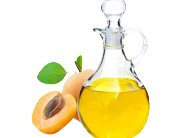The human body is capable of creating different types of fats, however there are some which are necessary for different physiological functions, yet people cannot synthetize and must simply be obtained by the food we eat. Fatty acids are the primary molecules of fat that are used as structural units for synthesis of more complex fats needed for specific metabolic functions. People can synthetize molecules of fatty acids that have up to 18 carbon atoms in the carbon backbone of the molecule. For instance, the oleic acid, that is monounsaturated omega 9 fatty acid, is predominately ingested by the consumption of extra virgin olive oil, or black seed, flax or other cold pressed seed oils (that do contain the oleic acid in smaller quantities), yet our body is also capable of synthetizing this fatty acids on its own from other more simple molecules of fatty acids. Even the less known omega 7 monounsaturated fatty acids (such as palmitoleic acid as their most recognized representative), can either be obtained by consumption of fatty fish, pomegranate seeds, macadamia nuts, buckthorn fruits or other food sources, or could be synthetized by the body as well. However, the human body cannot synthetize polyunsaturated fatty acids which length exceeds 18 carbon atoms in their backbone (axe). This is the case of the linoleic and the α-linolenic acid 18:3Δ9, 12, 15 which have unsaturated bond between the 9th and 10th carbon atom (from the α-COOH group). Because we are simply not able to produce these fatty acids, they are called essential fatty acids and must be obtained in our bodies by the food we consume or specific supplementation.

The name omega (derived from the Greek letter ω) refers to the end of the fatty acid molecule opposite the carboxyl (COOH) group. Omega 3 fatty acids have their first unsaturated place of the carbon atoms located at the third, i.e. between the 3rd and the 4th carbon atom in relation to the omega end of the molecule, consequently the omega 6 fatty acids have their first unsaturated bond at their 6th carbon atom. The linoleic fatty acids is the so called primary omega 6 fatty acid that we must ingest with the food we consume, after which our body can use it to synthetize other forms of omega 6 such as the very important γ-linoleic acid. The α-linolenic acid is the primary omega 3 fatty acid that can be used for the production of other types of essential fatty acids.

There are many different omega 6 fatty acids such as the linoleic acid, γ-linoleic acid, calendic acid, adrenic acid, arachidonic fatty acid and other, yet there are only three different omega 3 fatty acids and they are α-linolenic acid (ALA), eicosapentaenoic acid (EPA) and docosahexaenoic acid (DHA). Depending on the need the human body is capable of converting ALA into EPA and then to DHA omega 3 fatty acid. Women tend to have relatively successful conversion of ALA into EPA omega 3, and depending on the metabolic needs of the body around 20 % of ALA can be converted to EPA, however the conversion of EPA into DHA depends on several factors and in reality it is achieved in a very small percentage.
The best sources of the essential linoleic omega 6 fatty acid which serves as precursor for synthesis of other omega 6 fatty acids are plant oils. This fatty acids can be obtain in its best most natural form from cold pressed seed oils, predominately the sunflower oil. The best natural sources of ALA omega 3 are cold pressed seed oils, such as the flax seed oil (in which ALA takes over 50% of its content) then black seed oil, pumpkin seed oil (where ALA is contained from around 10 to 20%), up to the other cold pressed seed oils such as the sunflower oil that also contains small quantities of this fatty acid. The best sources of the EPA and DHA omega 3 fatty acids are fatty fish and sea animals such as krill, squids and other, as well as sea algae.
Recent Posts
Contact Info
Str. Industriska zona Makedonka 21, 2000 Stip
Phone: +389 32 393 680
Mobile: +389 75 499 847
Fax: +389 32 393 681
Email: info@agrofila.com.mk
Web: www.filla.com.mk
Почитувани, заради подобро корисничко искуство, Агрофила користи „колачиња“ ("cookies"). Повеќе за „колачињата“ можете да прочитате на ЛИНКОТ. Со понатамошно користење на веб страницата, се сложувате со користење на колачињата
Manage consent
Privacy Overview
This website uses cookies to improve your experience while you navigate through the website. Out of these, the cookies that are categorized as necessary are stored on your browser as they are essential for the working of basic functionalities of the website. We also use third-party cookies that help us analyze and understand how you use this website. These cookies will be stored in your browser only with your consent. You also have the option to opt-out of these cookies. But opting out of some of these cookies may affect your browsing experience.
Necessary cookies are absolutely essential for the website to function properly. These cookies ensure basic functionalities and security features of the website, anonymously.
| Cookie | Duration | Description |
|---|---|---|
| cookielawinfo-checkbox-analytics | 11 months | This cookie is set by GDPR Cookie Consent plugin. The cookie is used to store the user consent for the cookies in the category "Analytics". |
| cookielawinfo-checkbox-functional | 11 months | The cookie is set by GDPR cookie consent to record the user consent for the cookies in the category "Functional". |
| cookielawinfo-checkbox-necessary | 11 months | This cookie is set by GDPR Cookie Consent plugin. The cookies is used to store the user consent for the cookies in the category "Necessary". |
| cookielawinfo-checkbox-others | 11 months | This cookie is set by GDPR Cookie Consent plugin. The cookie is used to store the user consent for the cookies in the category "Other. |
| cookielawinfo-checkbox-performance | 11 months | This cookie is set by GDPR Cookie Consent plugin. The cookie is used to store the user consent for the cookies in the category "Performance". |
| viewed_cookie_policy | 11 months | The cookie is set by the GDPR Cookie Consent plugin and is used to store whether or not user has consented to the use of cookies. It does not store any personal data. |
Functional cookies help to perform certain functionalities like sharing the content of the website on social media platforms, collect feedbacks, and other third-party features.
Performance cookies are used to understand and analyze the key performance indexes of the website which helps in delivering a better user experience for the visitors.
Analytical cookies are used to understand how visitors interact with the website. These cookies help provide information on metrics the number of visitors, bounce rate, traffic source, etc.
Advertisement cookies are used to provide visitors with relevant ads and marketing campaigns. These cookies track visitors across websites and collect information to provide customized ads.
Other uncategorized cookies are those that are being analyzed and have not been classified into a category as yet.








